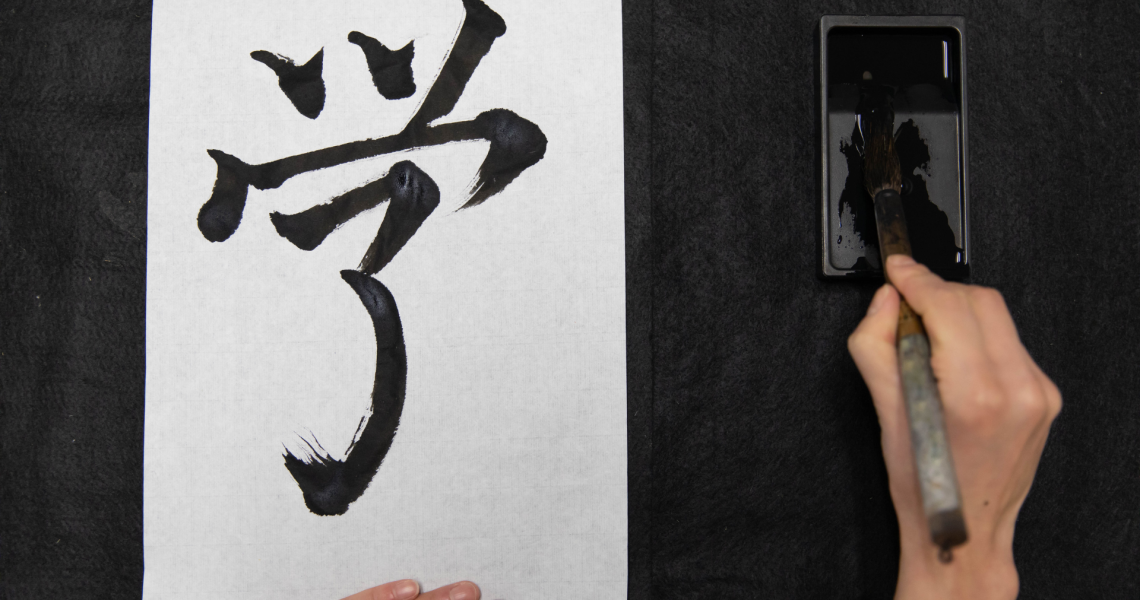Japanese calligraphy is an ancient art form dating back thousands of years. Japanese writing utensils have evolved over time, and today, traditional Japanese calligraphy brushes are made from animal hair. But historically, the Japanese have used any natural material they could get their hands on to create their writing brushes.
In ancient times, Japanese calligraphy was a highly valued art form. The brushstrokes were so precise, and the calligraphy was so perfect that these masterpieces were considered something only kings or emperors could write.
What Is Japanese Calligraphy?
Japanese calligraphy is the art of writing characters using a brush or pen. It is artistic and beautiful, and it’s an art that has been around for thousands of years. You can learn how to write Japanese calligraphy, just like you can learn how to draw manga and paint. You don’t need to be a good artist or have lots of artistic talent. Just have the desire to learn and to practice.
Japanese calligraphy is a style of writing that originated in Japan. Just like any other genre, there are some rules to learning it, and while the topic is broad, there are elements common to most forms of calligraphy.
What Tools Are Used for Japanese Calligraphy?
- Brush pens – Japanese calligraphers will use a brush pen to ink the pages of a small book of poetry. The brush pens are made from bamboo, and ink is mixed with water and kneaded into a flat, solid mass. The calligrapher will dip their brush into the ink and draw a stroke across the paper. The stroke can be as long or as short as they want but will be held down for several seconds before it is removed.
- Water bottles – Japanese calligraphy is known as one of the most beautiful art forms in the world, and it’s easy to see why. In order to create beautiful Japanese calligraphy, artists use various tools to create their art. One of the tools used by Japanese calligraphy artists is water bottles.
- Ink sticks – The tool used in Japanese calligraphy is called an ink stick, which is used to draw lines and create brushstrokes used in the art.
- Direction pads – To solve that issue, some artists use direction pads. Instead of using a brush that distributes ink via the artist’s hand, direction pads let the artist apply ink to the pad and then write with the tip of the pen. The pads come in a variety of shapes, and different artists use either round or square pads.
- Fountain Pens – Fountain pens are used in Japanese calligraphy, particularly in modern and casual settings. Traditional Japanese calligraphy, known as “shodō,” involves the use of a brush and ink. However, contemporary calligraphers, especially those who practice for recreational or artistic purposes, may choose to use fountain pens for their convenience. This is due to the reason that fountain pens offer a different experience compared to brushes. They can allow for greater control over line thickness and can be easier for beginners to handle. Additionally, fountain pens can be more convenient for everyday writing and practice.
Here Are the Styles Used in Japanese Calligraphy
- Brush Strokes – Brush strokes are the main component of Japanese calligraphy. They are brushstrokes used to write in Japanese calligraphy. Brushstroke is a technique in calligraphy used to draw letters, words, and decorative patterns. The brushstrokes used in Japanese calligraphy consist of diagonal, horizontal, vertical, and oblique strokes. The brushstrokes are used to create Japanese characters. The Japanese calligraphy brush strokes were made from goat hair.
- Lines – Lines-strokes is the Japanese Calligraphy style that has been used for centuries in Japan. This style of writing involves creating letters, numbers, or symbols by placing strokes on a flat writing surface. Each stroke has a predetermined width and thickness. Lines are open or stick-width, and strokes are pen-width or more.
- Dots – Japanese lettering is a style of calligraphy that is beautiful to look at. It uses a combination of dots and strokes. These dot-and-stroke combinations are used to create many swirls, loops, and arches.
- Shadows – The shadow strokes are styles used in Japanese calligraphy (Wabi-sabi). It is a simple way to use this style. The style consists of a wide horizontal line and a perpendicular line that joins them.
- Shading – Shading strokes are a type of stroke used in Japanese calligraphy. These are generally used to create shading, contrast, and emphasis. Shading strokes are executed with a brush dipped in black ink. They are executed with a brush dipped in black ink. Shading strokes are executed with a brush dipped in black ink. A brush holder is used to hold the brush in place.
Learning Japanese calligraphy is more than just learning how to write beautiful words and sentences. The art of Japanese calligraphy, also known as brush calligraphy, has a rich history and tradition behind it, and even today, it is still a remarkable form of art. Depending on the style of calligraphy, traditional Japanese calligraphers use brushes made of different materials such as bamboo, horsehair, and squirrel hair.

